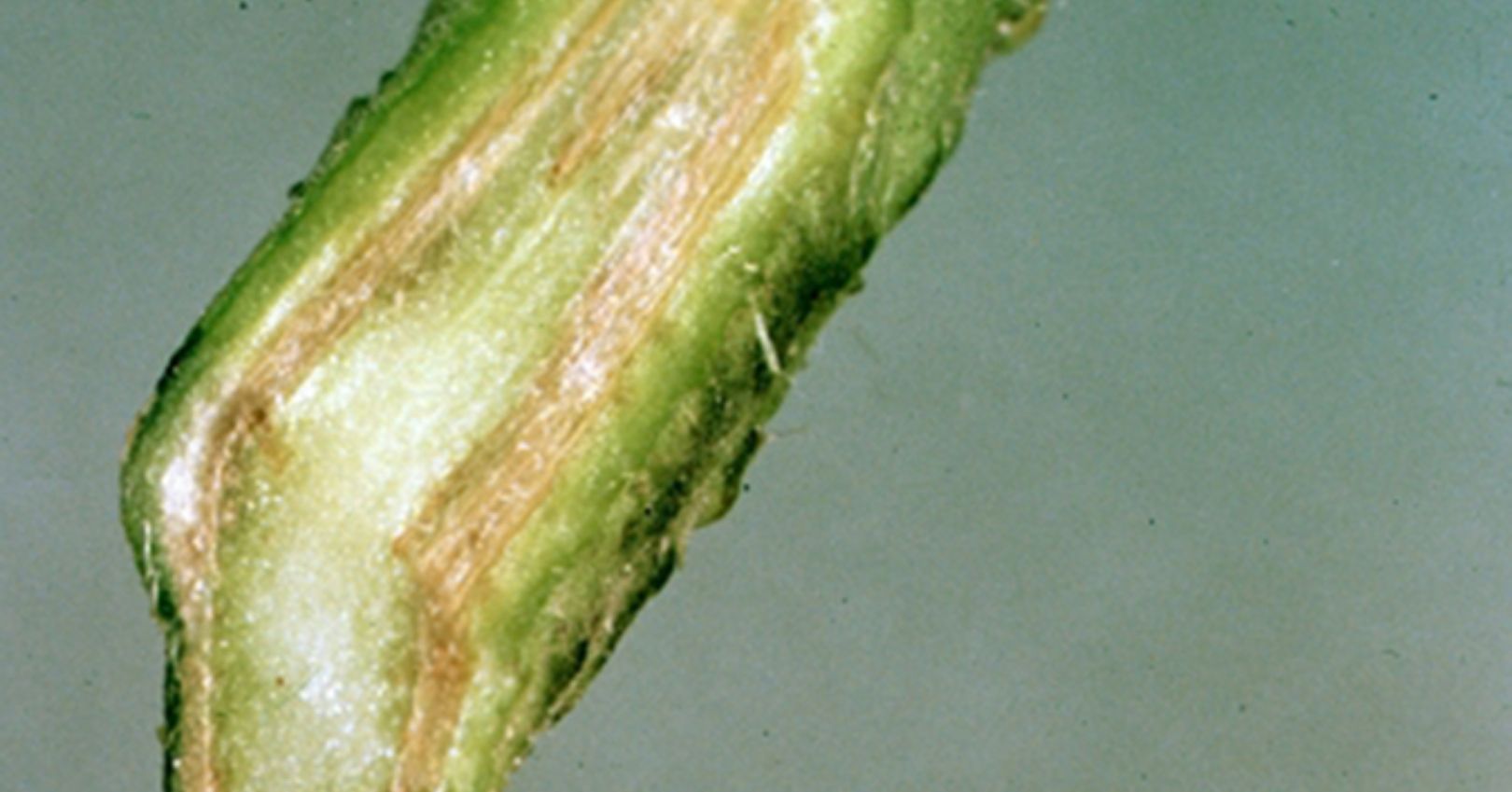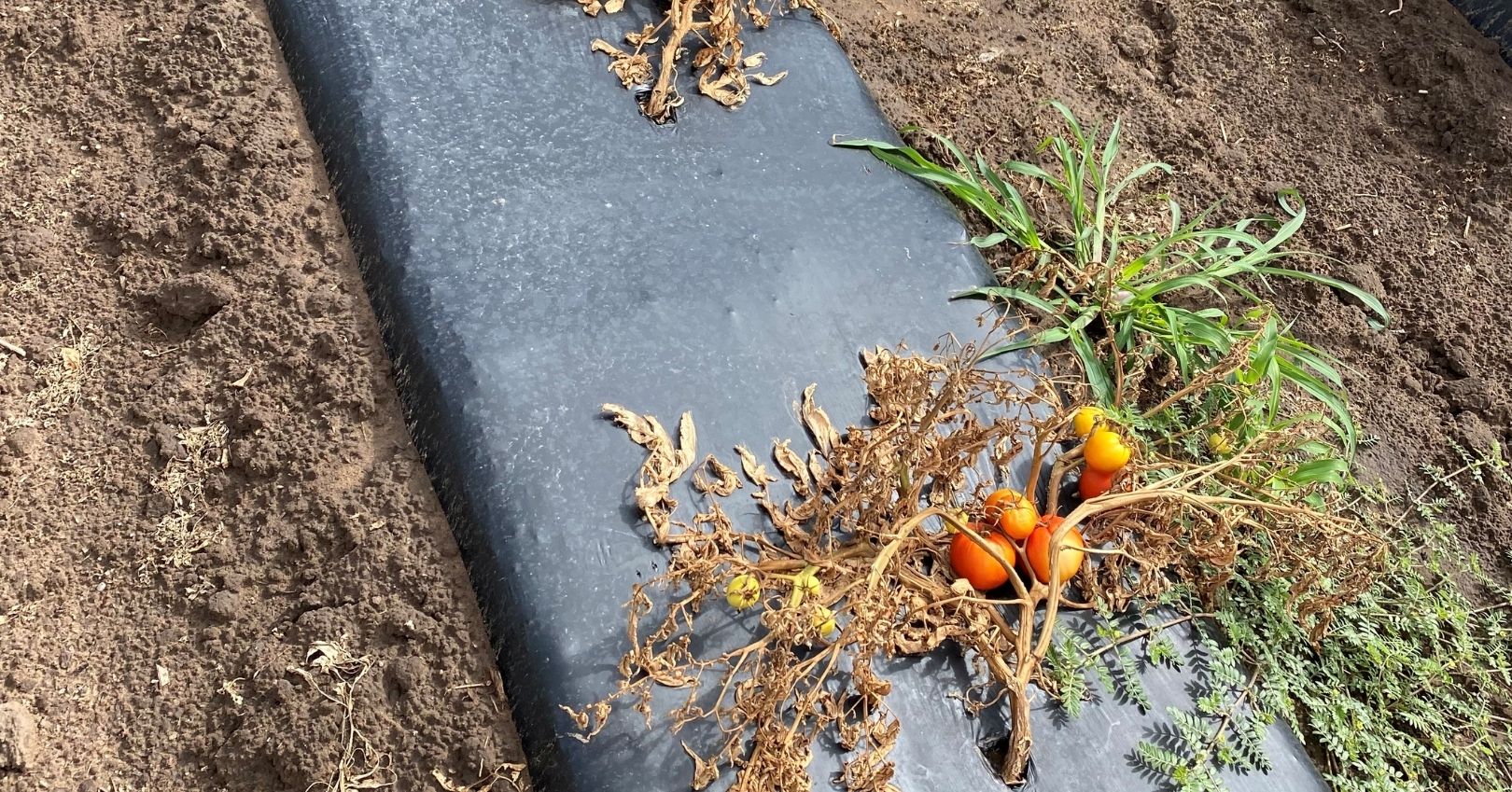Verticillium and Fusarium Wilts


Casual Agents
There are two fungi that cause wilt of tomato, pepper and eggplant: Verticillium spp. and Fusarium oxysporum types called formae specialis. Both fungi are soilborne. The formae specialis are host specific. The one infecting tomato will not infect pepper or eggplant and vice versa.
Symptoms
Initial symptoms include wilting of infected plants during the hot part of the day with recovery in the evening. Eventually, the wilt is permanent. A discoloration of the vascular tissue can be seen by cutting through the main stem. Leaves of plants infected with Verticillium may develop marginal chlorosis and v-shaped necrotic lesions.
Disease Cycle
Both fungi infect through roots. They grow through the vascular tissue up into the main stem. Wilting is caused in part by the fungal growth clogging the phloem and xylem and by the plant trying to stop the movement of the fungus by blocking the colonized vascular tissue.
Fusarium infections are favoured by high soil temperatures (90⁰F) and high soil moisture. When the plants are dead, Fusarium oxysporum produces salmon colored spores, called conidia, on the plant surface that are washed into the soil by rain and irrigation water. Fusarium also produces resting spores, called chlamydospores that can survive for several years in soil and plant debris.
Verticillium occurs more during cooler temperatures (68-74⁰F) and in soils with a high pH which are very common in Utah. It produces an overwintering structure (survival structure) called a microsclerotium, which is a hard black ball of fungal tissue that can survive for a decade or more in the soil, waiting for a suitable host to be planted.
Management
Both diseases are very difficult to control due to the production of the long-term survival structures in the soil.
- Use resistant varieties when available. Resistant tomato varieties are available for Verticillium race 1 but not race 2, and for Fusarium oxysporum races 1, 2 and 3.
- Plant on raised beds for better water drainage.

